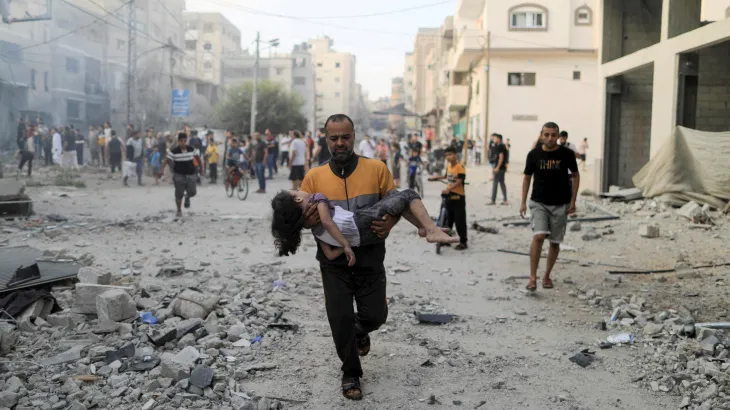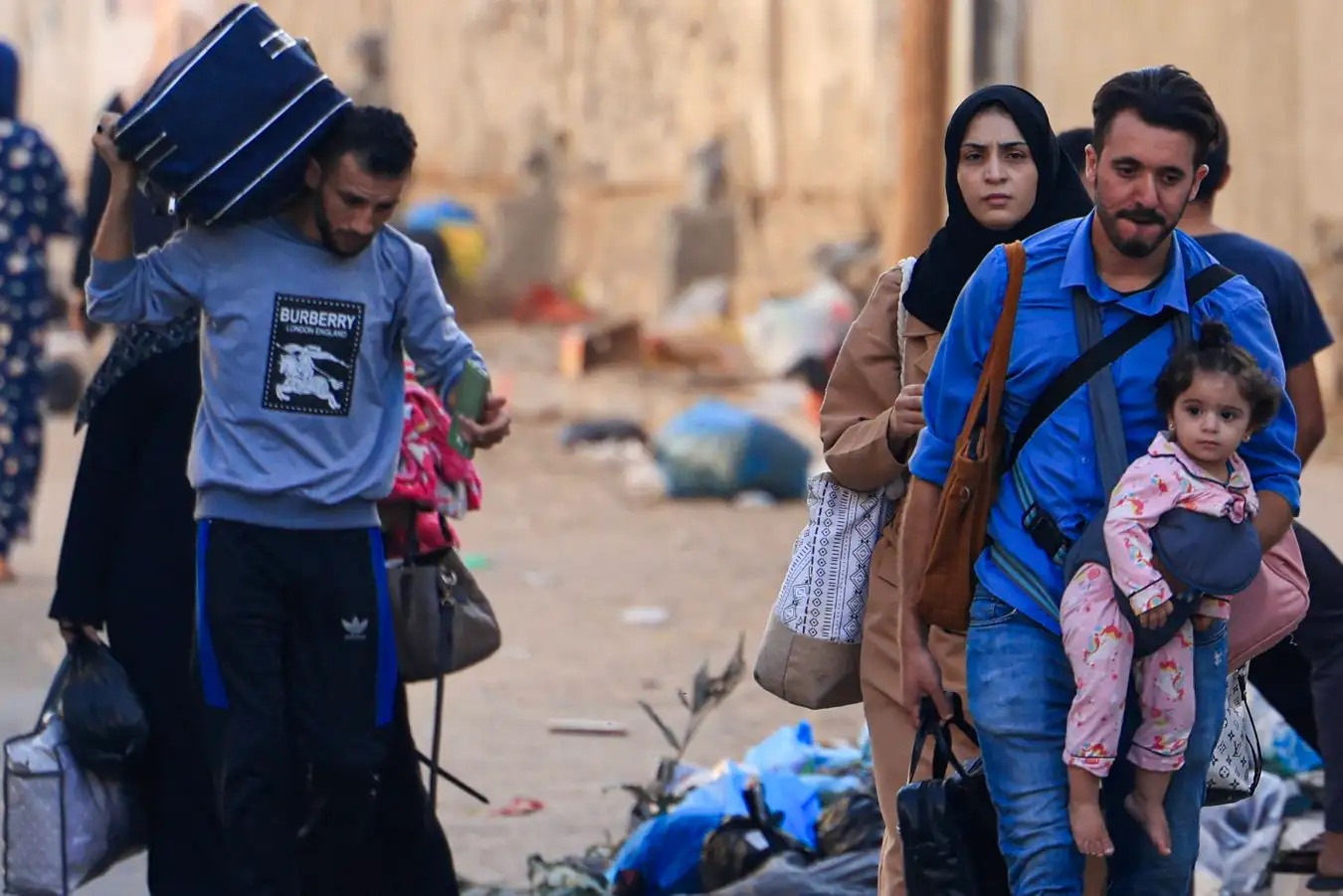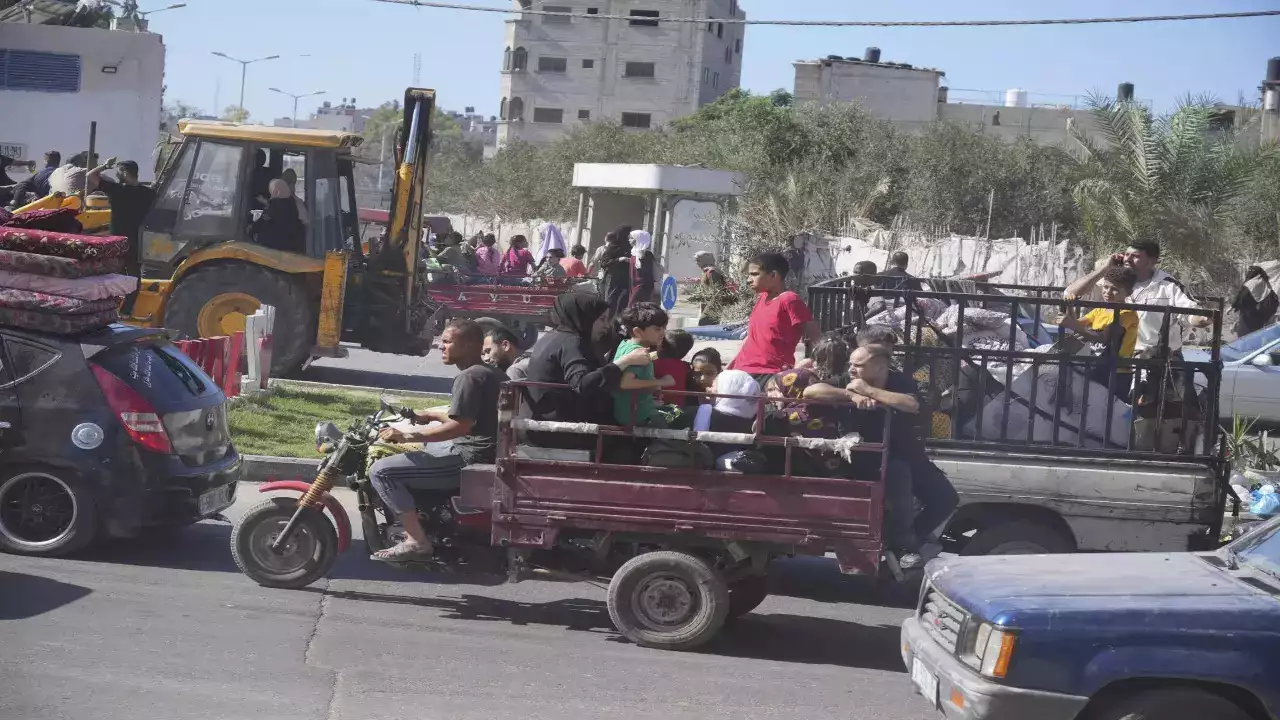Palestinians in Gaza Facing Serious Challenges as Israel Urges Mass Evacuations
In Khan Younis a town in the south of the Gaza Strip many Palestinians are facing a tough decision. Israel has asked for mass evacuations as its military steps up its ground offensive and continues to bombard targets in the area. This situation puts the people living there in a really hard spot.
They have to choose between staying where they are right in the path of the Israeli forces or trying to find safety in other parts of the Gaza Strip. But even moving to these other areas doesn't promise them safety.
This movement of so many people is making an already tough situation even worse. Thomas White who works with the U.N. agency for Palestinian refugees in Gaza says that there's a new wave of people having to leave their homes. He points out that the humanitarian situation is getting more difficult every hour.
It's a reminder of how conflicts like this affect ordinary people forcing them to leave behind their homes and everything they know often with nowhere safe to go. It's a situation that's hard to imagine for many of us but it's the reality for those living in places like Khan Younis.

Israel's Objective: Dealing a Blow to Hamas
Israel is under pressure from its top ally the United States to deal with Hamas before any potential new cease-fire takes place. The mounting civilian death toll which Palestinian health officials claim to be several hundred since the end of the previous week-long truce increases international pressure to resume negotiations. Additionally the ongoing airstrikes and ground offensive have resulted in large areas of the Gaza Strip including parts of Gaza City being reduced to rubble making them uninhabitable.
Limited Escape Options for Palestinians
As the conflict in Gaza continues the people living in the region find themselves trapped in the crossfire with limited options for escape. The ongoing Israeli ground offensive has squeezed nearly 2 million people into the already limited space of southern and central Gaza. With the latest fighting causing widespread destruction and driving hundreds of thousands of people from their homes the situation is dire.
However refugees fleeing the violence are being forced to stay within the region as both Israel and neighboring Egypt have closed their borders to refugees seeking safety. The current situation highlights the urgent need for a peaceful resolution to prevent further harm to the people of Gaza.
Calls for Evacuation and the Humanitarian Challenge
Residents of Khan Younis reported hearing airstrikes and explosions after receiving leaflets from the military urging them to relocate further south toward the border with Egypt. The U.N. confirmed that Israel ordered an evacuation of an area constituting about a fifth of Khan Younis where 117000 people used to live but now hosts tens of thousands of displaced individuals. The evacuation zone also includes 21 shelters accommodating 50000 people from northern Gaza. Furthermore large areas east of Khan Younis have also been ordered to evacuate.
As the Israeli troops approach Khan Younis from the northeast it is clear that they aim to cut central Gaza off from the south. Rear Adm. Daniel Hagari the Israeli military spokesman stressed that while pursuing Hamas with "maximum force" the army is also making efforts to minimize harm to civilians. To assist residents in evacuating a map has been provided dividing southern Gaza into smaller blocks to give precise instructions.

Reluctance to Evacuate and Human Suffering
Previous evacuation orders have been met with resistance from some Palestinians who do not feel safer in the designated areas which have been repeatedly bombed. Many also fear that they will never be allowed back into their homes. Even during the cease-fire those who fled the north have been barred from returning.
Mirjana Spoljaric the president of the International Committee of the Red Cross described the level of human suffering as intolerable. She also emphasized the need for the immediate release of hostages held by Palestinian militants. In her words "It is unacceptable that civilians have no safe place to go in Gaza and with a military siege in place there is also no adequate humanitarian response currently possible."
Casualties and Destruction
Since October 7 the Health Ministry in Gaza run by Hamas has reported a death toll of over 15890 with 70% of the casualties being women and children. The number of wounded exceeds 42000. Additionally hundreds of people have been killed or injured since the cessation of the previous cease-fire with many still trapped under the rubble.
In Deir al-Balah the Al-Aqsa Martyrs Hospital received 32 bodies overnight following Israeli strikes. The footage showed deeply emotional scenes of loved ones mourning their deceased family members. The military claims to have targeted around 200 Hamas sites overnight while ground troops operated simultaneously. During this time troops discovered a militant hideout in a school containing tunnel shafts explosives and weapons.
It is important to note that these battlefield reports from both sides cannot be independently confirmed. Israel insists that it targets Hamas militants rather than civilians and accuses the militants themselves of operating in residential areas. However specific details regarding the targets of individual strikes are not provided.
International Pressure and U.S. Involvement
The United States is actively urging Israel to take measures to avoid additional displacement of innocent people and to prevent further loss of civilian lives. Vice President Kamala Harris emphasized the United States' position against forced relocations and any changes to Gaza's borders during her visit to the region. However the level of influence the Biden administration has over Israel's offensive is uncertain especially with the mounting pressure from their allies in Congress.
To establish a Palestinian state and bring about lasting peace the United States proposed that Israel relinquish control of postwar Gaza to the internationally recognized Palestinian Authority. This proposal aims to contribute to a broader initiative. However Israel has chosen to reject these suggestions showcasing the complexity and challenges involved in reaching a mutually agreeable solution.
As the situation continues to evolve it remains to be seen how much impact the United States can have on Israel's offensive and whether alternative approaches can be found. The international community as well as regional stakeholders must continue to collaborate in search of a sustainable resolution that respects the aspirations and rights of both Palestinians and Israelis.
Uncertain Cease-Fire Prospects
Hopes for a temporary cease-fire have faded as Israel recalled its negotiators. Hamas now insists that any further release of the hostages taken during the October 7 attack must be tied to a permanent cease-fire.
The previous cease-fire facilitated the release of hostages on both sides with 105 Israelis and foreign hostages released and 240 Palestinians imprisoned by Israel set free. Most of those released were women and children.
